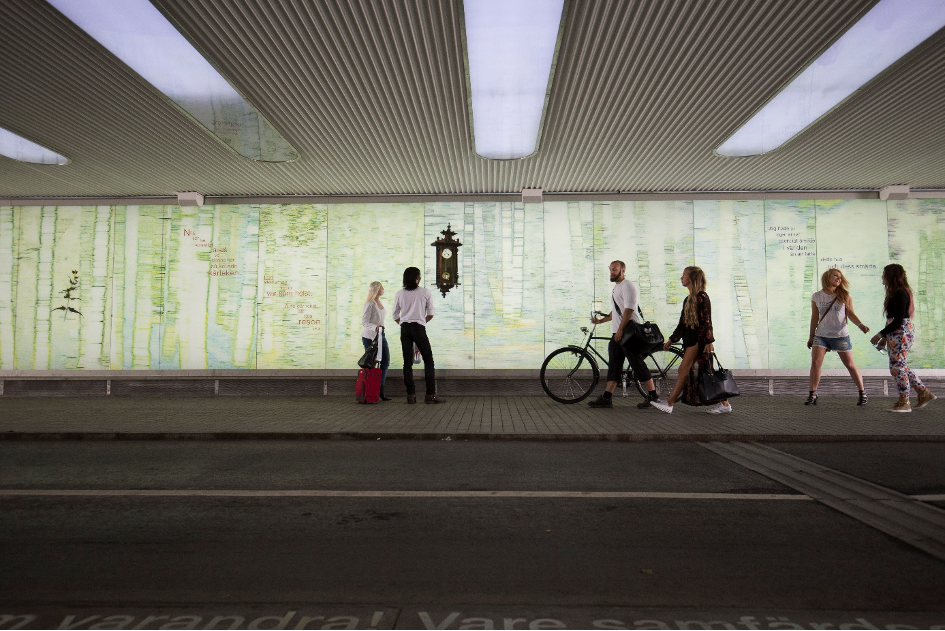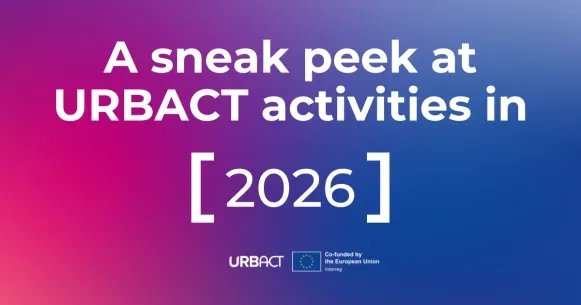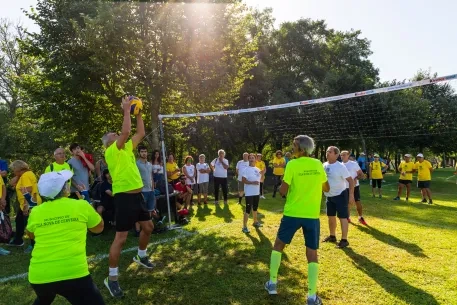Affordable and Accessible Green Cities: Recommendations and a roadmap for cities

3.1 The barriers addressed by cities to make the Just Transition a reality
This report identifies a series of barriers (see definitions in Appendix 2), which can prevent cities from addressing accessibility and affordability needs in their green actions/projects. As a summary of Chapter 2 on Promising Practices, Table 4 below shows which barriers each of the Promising Practices addressed. This table is intended to help cities identify which Promising Practice may be of interest to them considering their own specific context and given the barriers they may be facing.
Table 4: Promising Practices and the barriers they address
|
|
Promising Practice 1: Integrating just and green strategic dimensions in local projects |
Promising Practice 2: Identifying the needs of vulnerable groups |
Promising Practice 3: Collective infrastructure for green transitions |
Promising Practice 4: Tailored solutions for individual households |
Promising Practice 5: Enabling financial models |
|
Barriers facing cities |
|||||
|
Lack of strong vision / leadership |
X |
|
|
|
|
|
Lack of a policy / delivery mechanism |
X |
|
|
|
|
|
Lack of data / knowledge about vulnerable groups and their main problems |
|
X |
|
X |
|
|
Lack of an enabling funding framework |
X |
|
|
|
X |
|
Lack of municipal funds |
X |
|
|
|
X |
|
Lack of cross-departmentalism at city level |
X |
|
|
|
|
|
Lack of monitoring and evaluation of policies / actions |
X |
X |
|
|
|
|
A civil servant skills deficit |
|
X |
|
X |
|
|
Difficulty with reaching out to vulnerable groups |
X |
X |
X |
X |
|
|
Barriers facing vulnerable people |
|||||
|
Lack of knowledge of opportunities among vulnerable people |
|
|
X |
X |
X |
|
Lack of adequate provision for vulnerable people |
|
|
X |
X |
X |
|
Vulnerable people’s inability to seize opportunities |
|
|
X |
X |
|
|
Lack of personal funds |
|
|
|
X |
X |
|
Other barriers |
|||||
|
Wicked socio-economic context |
|
|
X |
X |
|
|
Pre-existing urban planning context |
|
|
X |
X |
|
|
Intrinsic technological challenges |
|
|
X |
|
|
3.2 Roadmap and factors of success for city-level action on Just Transitions (affordability, accessibility, green goals)
The route to Affordable and Accessible Green Cities has many obstacles, yet it is one that cities should take, wherever possible, notwithstanding the significant number of political, economic and other situational barriers they may face that have not been discussed here as they lie beyond the scope of this report. To overcome the obstacles they may face, cities should consider 2 main elements to this challenge:
- The prerequisites to action
- Committed leadership from public authorities.
- Sufficient administrative capacity.
- Prerequisites linked to the specific solutions for accessible and affordable green transitions.
- The available solutions—trialled by UIA and URBACT cities or from other sources as part of the policy design process.
These points are elaborated on in the paragraphs that follow.
The following points address the accessibility and affordability aspects of green transitions, mindful of the needs of vulnerable groups:
Committed leadership from public authorities
Join up the vision
It is challenging to develop a project combining both social inclusion and energy transition concerns. Goals need to be well-defined, and policymakers must be committed to supporting the policy process as there will be hurdles. The goal needs vision, one that stresses the need that a green transition is essential and that to be successful it must include society’s vulnerable groups. Elected representatives could also take the lead and join an ambitious movement, led by people like the Mayor of Getafe, who makes the case of going beyond an idea of energy poverty to an idea of a ‘right to energy’, which would be a fundamental human right to affordable, reliable, renewable, and sustainable energy.
Link priorities and funding opportunities
All cities face human resource and financial constraints. Yet, the green transition is no longer an optional course of action. Extending the reach of policy to ensuring that no one is left behind has a cost and cities need to gear up, i.e., acquire the resources they need. While cities themselves must decide how they can best address their competing priorities, and act within their national contexts, their engagement may be a key factor in a successful Just Transition. Participation in EU programmes and initiatives can help cities to gear up (through capacity building, benchmarking, funding, etc.) (see ‘Pre-identifying challenges and issues’ below).
Limit any unexpected negative impacts caused by Just & Green policies
Improving the quality of life (e.g., nature-based solutions for climate-friendly urban planning, improving housing, new public transport services, going digital, etc.) might have negative impacts on some. There may even be direct benefits for some vulnerable groups (e.g., owners in the case of building renovations), but the same policy might also generate some displacement (e.g., of tenants unable to pay higher rents). Gentrification and ‘renoviction’ are a risk. Policymakers should be sufficiently aware of this and account for it in policy design.
Foster interdepartmental working
This report highlights the interconnections between several key Just Transitions policy areas (climate-friendly urban planning, sustainable energy, sustainable housing, sustainable mobility). In a Just Transitions’ perspective, cities should address these issues in an integrated way, which implies cross-departmental working and partnerships with stakeholders.
Use an agile methodology
The proposed solutions display creativity: in the methodology they use, the technologies, and in the cross-departmental and inclusive way the cities have chosen to work. The best laid plans rarely anticipate all contingencies so, in addition to committed leadership, cities need to use an agile methodology, i.e., based on projects and achieved through collaboration, if they are to be able to adjust to difficulties and overcome them, not least where the policies are experimental and risky.
Pre-identify challenges, issues, and benchmark for solutions
To an extent, projects can call on the experience of previous projects. Forward planning and benchmarking will be essential. There are many sources of policy inspiration within the European initiatives and programs, including but not limited to the Promising Practices discussed here under the UIA and URBACT initiative. Benchmarking for solutions and ideas is best practice and may require expert input. The main challenges will be related to technology, finance (including fiscal), legal, or human (resource, capacity, etc.) aspects. A risk mitigation strategy should also be put in place and updated throughout the project planning stage.
-
‘Soft’ adaptation measures, including the following:
-
Managerial (e.g., introduce flexible working hours work during heat waves).
-
Strategic (e.g., commission new buildings with climate resilient design as part of planned urban building programme).
-
Temporary (e.g., use shade to reduce temperature increases)
-
Technical/technology / ‘grey’ (e.g., refurbish buildings; enhance physical flood defences, increase capacity of sewage systems).
-
Ecological / ’green’ (e.g., creating or expanding green infrastructure for water runoff management or microclimate management initiatives).
Deploy of specialised human resources
Considering the complexity of the challenges of designing and implementing Just Transitions projects, cities are likely to have to invest in capacity-building, training, together in some cases with ad hoc external assistance, including through project-oriented partnerships. The question of capacity applies from the outset and throughout project preparation, implementation, and project follow-up.
Consider digital solutions
Digitalisation is high on smart cities’ agendas due to its potential for increasing efficiency and for making services more user-friendly for users. Here again, cities should ensure that they do not increase the digital divide by neglecting vulnerable groups in communication, interactivity, and other digital uses.
Limit the risks
The solutions proposed in this report cover a range of technologies. Some are approved technologies (e.g., energy efficiency systems, digitalisation of data, etc.,). Some involve financial and legal aspects that may vary depending on the jurisdiction and that requirement for further study (e.g., cooperatives, renovations, circularity of buildings, etc.,). Cities should be aware of such complexities and limit any potential negative consequences.
Combine hard and soft solutions
All the proposed solutions combine hard (technical) and soft components (support to and engagement of vulnerable groups, behavioural change, economic and legal considerations etc). This complementarity gives a holistic approach to the project, its solutions, and its impacts in the city.
Reach out to, engage with, and support vulnerable groups
Vulnerable groups are the targets of the solutions. They should be involved in the process, even if top-down, to ensure that solutions match their needs. Vulnerable groups should also be included in co-creation and co-implementation processes, via grassroots mobilisation.
3.3 Promising Practices: Added Value, Lessons, and Replication Potentials
Table 5 below provides a summary of the different Promising Practices described in Chapter 2, their added value, their main lessons, and their replication potentials. Following the description of the barriers faced by each of these Promising Practices in Section 3.1, and the roadmap provided to cities in Section 3.2 of this report that are in their journey towards Just Transitions, the table below summarises the main learnings and added value of each of these projects.
Table 5: Summary of Promising Practices
|
|
Promising Practice 1: Integrating just and green strategic dimensions in local projects |
Promising Practice 2: Identifying the needs of vulnerable groups |
Promising Practice 3: Collective infrastructure for green transitions |
Promising Practice 4: Tailored solutions for individual households |
Promising Practice 5: Enabling financial models |
|
UIA and URBACT projects |
RESILIO GBG_AS2C PUJ EPIU Vilawatt ICCARus INNOAIR Umeå |
GBG_AS2C EPIU Vilawatt Super Circular Estate COMMUTE Umeå |
RESILIO GBG_AS2C PUJ INNOAIR COMMUTE Umeå |
EPIU Vilawatt ICCARus Yes, we rent!
|
ICCARus Yes, we rent! Super Circular Estate |
|
Added value |
Recognising issue complementarity
Putting Just Transitions on cities’ agendas
Monitoring local policy actions |
Ensuring the relevance of local policies
Making vulnerability visible
Promoting data unification and the digital transition in city operations |
Making the green city accessible to all
Contributing long-term urban planning
|
Addressing the complexity of the transitions for all challenge
Using residents’ feedback in local policies
Developing an in-kind subsidy system |
Giving vulnerable groups the financial means to participate in the transition
Empowering vulnerable groups
Bringing the owners and occupants of rented properties into a renovation process |
|
Main lessons |
Integrating Just Transition goals in existing strategies catalysing local actions using national and regional policy framework
Fostering interdepartmental governance
|
Identifying target groups
Looking under stones for relevant data, improving the quality of analysis, policy, and the power to predict
Undertake thorough research to understand context
Supporting digitalisation |
Planning green infrastructure that benefits vulnerable groups indirectly
Planning green infrastructure that is accessible to vulnerable groups
Designing public transport that is accessible to all |
Providing complementary solutions through one-stop shops
Getting owners on board with tailored support
Renovating collective buildings |
Giving vulnerable groups the financial means to participate in the transition using creative funding models and subsidies
The value of creative incentive systems and housing cooperatives in delivering affordable housing
Determining the costs of technical solutions for the reuse of building materials |
|
Replication potential |
Adjusting local policies for the accessible and affordable green transitions
Cross-departmental working and governance in cooperation with relevant stakeholders
|
Using existing tools in other fields
Replicating the approaches and content of the Promising Practice in other cities
Implementing existing tools at higher governance scales
Making the data available to other sectors (e.g., from public to private) |
Being more creative with nature-based solutions
Using Artificial Intelligence
Implementing a gender-sensitive approach
|
Implementing one-stop shops
Designing a methodology for tailor-made solutions
Carrying out in-depth legal and fiscal work |
Understanding the technical, legal, fiscal, and economic aspects of the models
Developing new policy models (funding) |
[12] of which 7500 have actually adopted action plans
About this resource
The Urban Innovative Actions (UIA) is a European Union initiative that provided funding to urban areas across Europe to test new and unproven solutions to urban challenges. The initiative had a total ERDF budget of €372 million for 2014-2020.
Similar content




